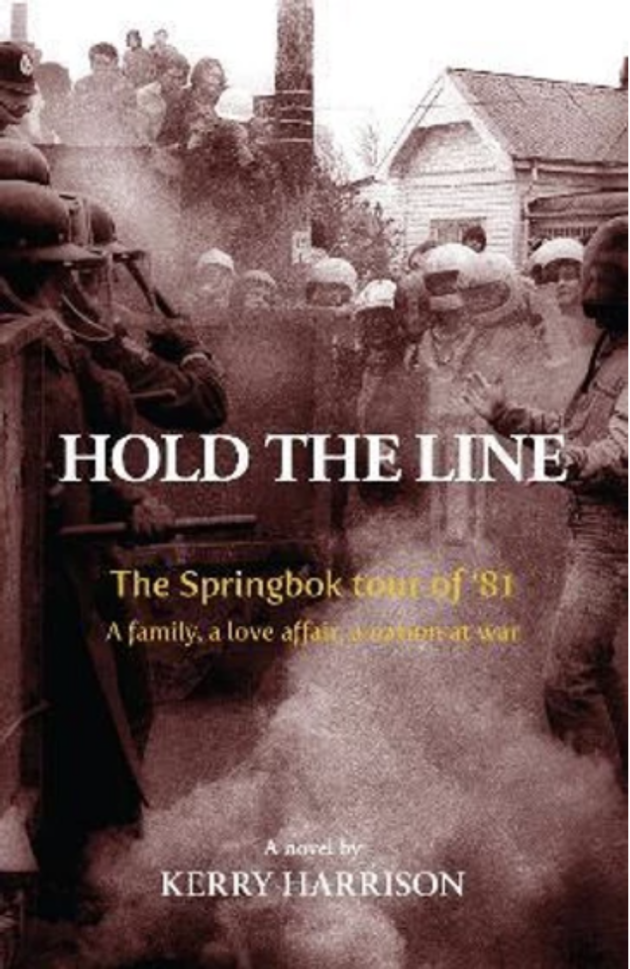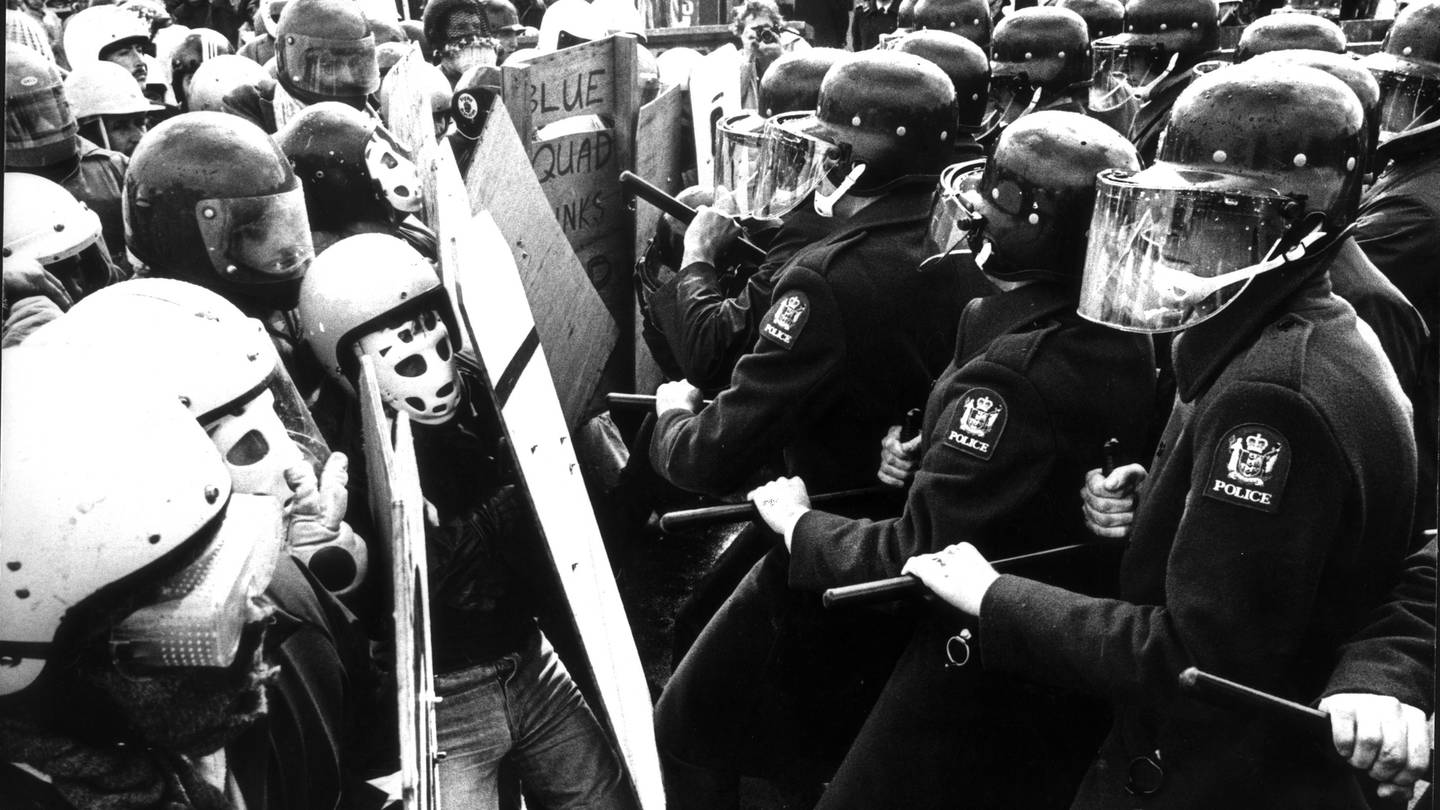Eliora
Here are two book reviews that are very different from each other, but equally good reminders that 40 years ago a Springbok rugby tour divided New Zealand.
The violence that occurred has been at times labelled as eight weeks of “Batons, Brawls, Barbed wire and Boks.”
Hold The Line by Kerry Harrison.
(Cloud Ink Press Ltd)

The front cover of this new book says it’s a story of “The Springbok tour of ’81. A family, a love affair, a nation at war”.
Hold The Line is a well-researched novel about this tour. The author describes the work as fictional but, when read alongside historical records, it accurately picks up the trends, landscape, the character of New Zealander’s rugby fanatics and general Kiwiana.
The book captures the division the tour caused within society and in the families central to the storyline. Weaving the love story of Viktor (Yugoslav background) and Beth (Kiwi) is a clever way of portraying the polarising situation many found themselves in. Unknown to each other, one is a protestor fighting the police and the other a policeman “warring” against the protestors.
Viktor struggles with the challenge of apartheid. The novel expresses his thoughts.
They think that stopping the tour they are doing the right thing for the black people of South Africa; they will help their plight. If only it could be so simple. Peeling back the layers of prejudice is much harder than that. Inside there’s a hard nut of racism. It’s everywhere. It’s what he felt as a child…
p130
Kerry Harrison is an experienced author. Each sentence is carefully crafted, bringing out the emotions and the highly charged tension, making the novel a polished interpretation of this unforgettable period in New Zealand’s history.
The Red Squad Story by Ross Meurant
(Harlen Publishing Co Ltd., Auckland 1982)

True to the colour on the front cover that is mainly black, this book tells the story of the dark days of the Springbok Rugby tour of NZ in 1981. It is written from a police point of view, describing the planning and training for a ‘war’ between the rugby crowd, protestors and the police. The squad had riot gear and Monodnock PR 24 batons. Many protesters wore crash helmets and had bottles, planks of wood and other objects to lob.
This was the first Springbok tour to New Zealand in 15 years and there were 16 matches. The rugby-mad fans were excited to have the Boks here to play the All Blacks.
The Red Squad is from Meurant’s role as a Senior Sergeant. He describes a common spirit existing in the members, inspiring enthusiasm, devotion, and strong regard for the honour of the group.
The tour also provided our group with the opportunity to develop the type of ‘esprit de corps’ that possibly has only been found by NZ groups in the past when fighting with the military in wartime …
p20
The squad was caught unawares; the anti-tour protest movement was well organised and took action everywhere the Springboks went. The aim of HART (Halt All Racist Tours) was to stop the tour. The Rugby enthusiasts wanted the tour to proceed, believing politics should be kept out of sport.
The writer records Abe Williams, the Bok’s coloured assistant manager, a married man with children who was a school principal, giving his views of South Africa’s racial injustices.
Abe does want a vote, of that there is no mistake, but he is prepared to live under the present system and work steadily for gradual change. ‘Evolution, not revolution’ is his motto.
p88
Meurant writes of the danger and tiredness every policeman faced holding the line sometimes for hours on end. He claims that it was a choice of either being armed with batons and dressed in riot gear, or being knocked over and seriously injured, or worse, killed by the sheer numbers of protestors and the anger generated by the militant activists.
Meurant’s experience with the press was negative from the outset.
As the tour date drew closer the media became more outspoken, lambasting the New Zealand Rugby Union, for inviting the Boks and castigating the Government for permitting the tour to proceed.
p182
The book concludes with accusations that the police used too much force. The protestors and the police both received injuries. The ‘Clown’ incident didn’t die down, and except for “the Truth newspaper and one or two other smaller publications” (p153), Meurant puts the blame on the biased MSM and the organised campaign by the ‘Communist’ Activists.
Throughout the tour this type of distortion and exaggeration in the press and TV persisted.
p183
Emotive journalism described the Red Escort Group firstly as the riot squad, then they became known as the cold, unflinching Red Squad. Ross Meurant’s book is a detailed account of this infamous Tour. It records the nuances of the tour and has many full-page photographs.
Please share so others can discover The BFD.

